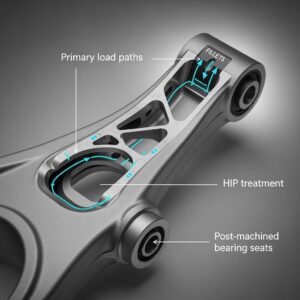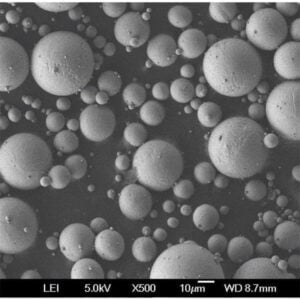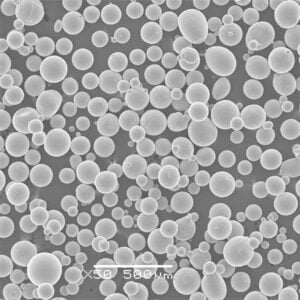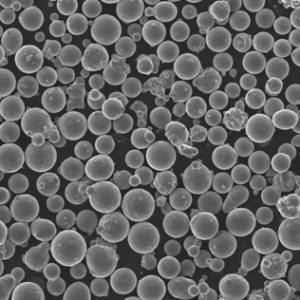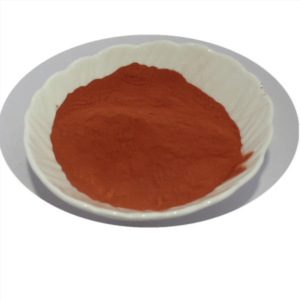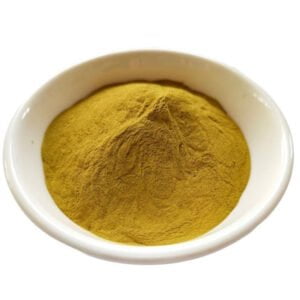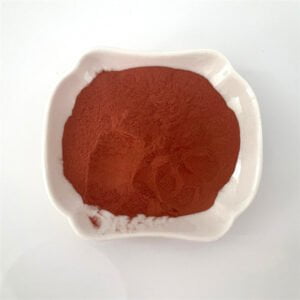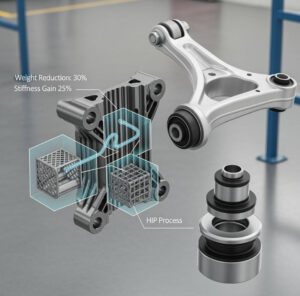チタンワイヤー
目次
驚くほど強く、驚くほど軽い素材を想像してみてほしい。腐食に逆らい、極端な温度にも耐える金属。それが チタン線.この一見地味な素線は強力なパンチを持ち、さまざまな産業で数え切れないほどの用途に使われている。
しかし、チタンワイヤーの世界を掘り下げる前に、基礎を固めよう。
チタンワイヤーとは?
チタンワイヤーは、チタンのロッドまたはインゴットを引き下げることによって製造される汎用性の高い金属フィラメントです。チタンはユニークな特性を兼ね備えており、様々な分野で重宝されています。
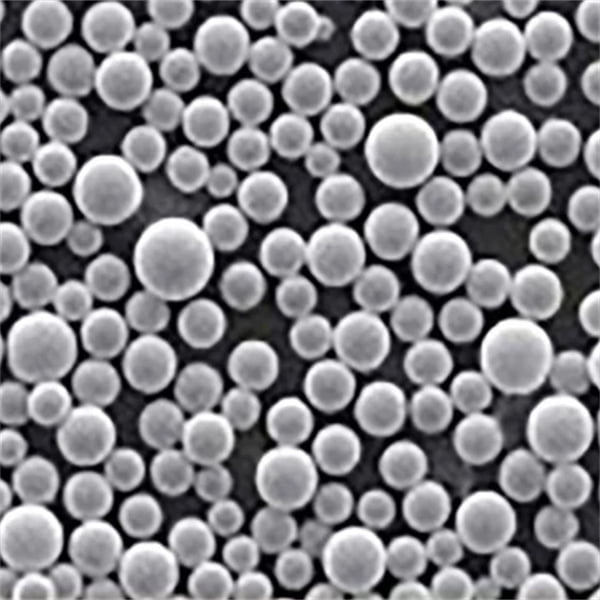
の種類、組成、および特性 チタンワイヤー
チタンワイヤーの世界は万能ではありません。異なるグレードは特定のニーズに応えます。ここでは、いくつかの著名なタイプの内訳をご紹介します:
| グレード | 説明 | 主要物件 |
|---|---|---|
| グレード1(商業純度) | 最も広く使用されている鋼種で、優れた延性と成形性で知られる。 | 高耐食性、良好な溶接性、軽量 |
| グレード2(市販純度) | グレード1に比べ強度が若干向上。 | 良好な延性と溶接性を維持 |
| グレード3(商業純度) | グレード2よりやや強度が高いが、成形性は若干劣る。 | 強度と加工性のバランスを必要とする用途に最適 |
| グレード4(商業純度) | 主力」グレードで、グレード3よりも高い強度を誇る。 | 良好な耐食性と溶接性を保持 |
| グレード 5 (Ti-6Al-4V) | アルミニウムとバナジウムを含む合金鋼種で、市販の純鋼種よりも著しく強度が高い。 | 優れた強度対重量比、優れた耐疲労性 |
| グレード6(Ti-6Al-4V ELI) | グレード5の超低間充てんタイプで、溶接性が改善されている。 | グレード5の強度を維持し、より優れた溶接特性 |
| グレード 7 (Ti-2.5Pd) | 優れた生体適合性で知られるパラジウムを含む合金。 | 組織拒絶反応が少ないため、医療用インプラントに最適 |
| グレード9(Ti-3Al-2.5V) | 強さとタフネスのバランスが良い。 | 航空宇宙用途に人気の高い選択 |
| グレード29 (Ti-6Al-4V) | グレード5の高強度バージョンで、特に要求の厳しい用途に適している。 | 標準的なグレード5よりも優れた強度を提供 |
| CP Ti(商業純チタン) | 商業的に純粋な等級(通常1~4等級)の総称。 | 市販の純チタンの一般的特性を有する |
チタンワイヤーの用途
チタンワイヤーの多用途性は、その多様な用途を通して輝きを放ちます。以下はその顕著な例です:
| 産業 | 申し込み | 推論 |
|---|---|---|
| 航空宇宙 | 航空機フレーム、着陸装置部品、エンジン部品 | 高い強度対重量比、優れた耐疲労性、高温に耐える |
| メディカル | 手術器具、骨ネジ、歯科インプラント | 生体適合性、耐食性、軽量 |
| 化学処理 | フィルターメッシュ、熱交換器、反応容器 | 過酷な化学薬品に対する高い耐食性 |
| ジュエリー | 装飾品、ブレスレット、イヤリング | 軽量、低刺激性、独特の美しさ |
| スポーツ用品 | ゴルフクラブ、自転車フレーム、釣り竿 | 高い強度対重量比がパフォーマンスを高める |
| 自動車 | 排気システム、サスペンション部品、エンジン部品 | 軽量、耐久性、高温に耐える |
| コンシューマー・エレクトロニクス | メガネフレーム、コンピューター部品 | 軽量、丈夫、美しい外観 |
の利点と限界 チタンワイヤー
他の素材と同様に、チタンワイヤーにも長所と短所があります。
メリット
- 卓越した強度対重量比: チタンは鋼鉄に匹敵する強度を誇りながら、大幅に軽量化されている。そのため、航空宇宙やスポーツ用品など、軽量化が重要な用途に最適です。
- 優れた耐食性: チタンは、様々な環境下で腐食から保護する酸化皮膜を自然に形成するため、化学処理や海洋用途において貴重な資産となります。
- 生体適合性: 特定のグレードのチタンは卓越した生体親和性を示し、人体によく溶け込み、組織の拒絶反応を最小限に抑えます。これは、医療用インプラントや補綴物への使用の道を開くものです。
- 高温耐性: チタンは高温でも強度と完全性を維持するため、エンジンや排気システムのような極端な熱にさらされる部品に適しています。
- 美的アピール: チタンは独特の光沢を持ち、磨き上げて輝きを放つことも、自然でマットな仕上がりにすることもできます。この審美的な多様性により、チタンは宝飾品、家電製品、さらには高級スポーツ用品において人気のある選択肢となっています。
制限:
- コストだ: スチールやアルミニウムのような一般的な金属に比べ、チタンはより高価な素材です。これは、コストが第一の懸念事項である用途においては、決定的な要因となり得ます。
- 機械加工性: 不可能ではありませんが、チタンの加工には、その固有の強度のため、特殊な工具と技術が必要です。これは、複雑な機械加工を必要とする部品の製造コストの上昇につながります。
- 低温では脆い: チタンは一般的に高温で優れた性能を発揮しますが、極低温では脆くなる可能性があります。極低温環境での用途では、この点を考慮する必要があります。
正しいチタンワイヤーの選択
適切なチタンワイヤーのグレードを選択することは、特定のアプリケーションの要求によって異なります。以下は考慮すべき主な要因です:
- 強さの条件 グレード5(Ti-6Al-4V)のような高グレードの合金は、航空宇宙部品のような用途に優れた強度を提供します。それほど要求の高くない用途には、市販の純合金(グレード1~4)で十分かもしれない。
- 耐食性: ワイヤーが曝される環境は重要な役割を果たします。過酷な化学薬品が使用される場合は、グレード2やグレード7のような優れた耐食性を持つグレードが必要になる場合があります。
- 生体適合性: 医療用途では、生体適合性からグレード7(Ti-2.5Pd)のようなグレードが好まれる。
- 成形性: 加工中に曲げや成形が必要な場合は、グレード1やグレード2のような延性の高いグレードを選ぶとよい。
- 重量を考慮する: 軽量化が最重要課題である場合、商業的に純粋なグレードが最も高い強度対重量比を示すため理想的である。
仕様、サイズ、グレード
チタンワイヤーには、多様なニーズに応えるため、様々な仕様、サイズ、グレードがあります。ここでは、選択肢をナビゲートするための内訳をご紹介します:
| プロパティ | 説明 |
|---|---|
| 直径 | 通常、0.001インチ(0.025mm)から0.5インチ(12.7mm)の範囲である。 |
| 長さ | 様々な長さのスプールでの供給が可能で、特定の要件に合わせてカットすることもできる。 |
| 表面仕上げ | ブライト、スムース、ポリッシュ、ブラックオキサイドなど、さまざまな仕上げが可能。 |
| 規格 | ASTMインターナショナル(ASTM)の仕様など、さまざまな業界標準に適合。 |

サプライヤーと価格
チタンワイヤー は、世界中の評判の良い多数のサプライヤーから容易に入手できます。価格は、グレード、直径、数量、表面仕上げによって異なります。以下に一般的な内訳を示す:
- 商業的に純粋なグレード(グレード1~4): 一般的に最も費用対効果の高い選択肢である。
- 合金グレード(グレード5以上): 通常、合金元素が添加されているため、市販の純鋼種よりも高価である。
- 直径が小さい: 大口径に比べ、単位重量あたりの価格が高くなる傾向がある。
- 特殊仕上げ: ポリッシュ仕上げやブラックオキサイド仕上げは、標準的なブライト仕上げに比べて割高になるかもしれない。
よくあるご質問
Q: チタンワイヤーは丈夫ですか?
A: はい、チタンワイヤーは非常に優れた強度対重量比を持ち、いくつかの鋼鉄よりも強く、しかもかなり軽量です。
Q: チタン・ワイヤーは錆びますか?
A: いいえ、チタンはほとんどの環境で錆や腐食を防ぐ保護酸化膜を自然に形成します。
Q: チタンワイヤーは体にとって安全ですか?
A:グレード7(Ti-2.5Pd)のような特定のグレードのチタンは、優れた生体適合性を示し、医療用インプラントや補綴物に適しています。
Q: チタンワイヤーの価格はいくらですか?
A: 一般的にチタンワイヤーはスチールやアルミニウムのような一般的な金属よりも高価です。具体的なコストはグレード、直径、数量、表面仕上げによって異なります。
Q: チタン・ワイヤーはどこで買えますか?
A: 数多くの信頼できるサプライヤーが世界中でチタンワイヤーを提供しています。オンラインマーケットや金属流通業者が一般的な供給元です。
Additional FAQs about Titanium Wire (5)
1) Can titanium wire be welded and what filler should I use?
- Yes. CP Grades 1–4 weld readily via GTAW. For Ti-6Al-4V (Grade 5/23/29), use matching filler (AWS A5.16 ERTi-5 or ERTi-23 for ELI). Maintain inert gas shielding (argon/helium) on front and back to prevent alpha case.
2) What surface finishes are best for biomedical titanium wire?
- ASTM F86-compliant pickling/passivation and electropolishing reduce surface contaminants and improve biocompatibility. For implantables, use Grade 23 (Ti-6Al-4V ELI) and verify ISO 10993 biocompatibility.
3) How does titanium wire perform in seawater and chlorine environments?
- CP Ti and Grade 2 exhibit excellent seawater corrosion resistance due to the TiO2 passive film. Avoid dry chlorine gas at elevated temperatures; consider Grade 7 (Ti-0.2Pd) for crevice/acidic chlorides.
4) What tolerances are typical for precision titanium wire?
- Drawn wire can achieve ±0.01 mm on small diameters; spring wire per ASTM F67/F136 or ASTM B863 can be supplied with tighter PSD on diameter and controlled tensile properties for forming.
5) Is titanium safety wire suitable for aerospace fastener locking?
- Yes. Aerospace safety wire commonly uses stainless, but Ti wire offers weight savings and non-magnetic behavior. Ensure compliance with MS20995 equivalent specs and confirm required shear strength and temperature limits.
2025 Industry Trends for Titanium Wire
- Aerospace rebound drives demand: Single-aisle build rates and engine overhauls increase consumption of Ti-6Al-4V wire for springs, fasteners, and additive feedstock.
- Medical market shift to ELI grades: More devices specify Grade 23 wire with tighter interstitial limits for improved fracture toughness.
- Green titanium surge: Recycling and hydrogen-based Kroll alternatives in pilot scale reduce embodied CO2 of titanium wire by 15–30%.
- AM and DED wire feed: Wire arc additive manufacturing (WAAM) expands for large structures; Ti wire feedstock standards tighten around surface cleanliness and cast-to-wire traceability.
- Price moderation: Sponge and melt capacity additions in Asia stabilize prices; surcharges tied to energy costs persist but soften vs. 2023 peaks.
2025 snapshot: titanium wire metrics
| メートル | 2023 | 2024 | 2025 YTD | Notes/Sources |
|---|---|---|---|---|
| Typical CP Grade 2 wire price (USD/kg, 1–3 mm) | 22–32 | 24–34 | 23–31 | Distributor quotes; ASTM B863 product lines |
| Ti-6Al-4V (Grade 5) wire price (USD/kg, 1–3 mm) | 45–65 | 48–70 | 46–66 | Market catalogs; aerospace surcharges |
| Medical Grade 23 wire share in med devices (%) | ~52 | ~56 | ~60 | Shift to ELI; FDA 510(k) trends |
| WAAM usage of Ti wire (tonnes, est.) | ~650 | ~800 | ~1,050 | Growth in shipbuilding/aerospace trials |
| Average lead time (weeks) | 6–10 | 7–12 | 6–9 | Capacity improvements, better sponge availability |
References:
- ASTM B348, B863, F67, F136: https://www.astm.org
- ISO 5832 (implants): https://www.iso.org
- FAA and EASA materials guidance repositories: https://www.faa.gov, https://www.easa.europa.eu
- Industry pricing/capacity commentary: https://www.rsc.org/journals-books-databases/ and supplier catalogs (ATI, VSMPO)
Latest Research Cases
Case Study 1: Hydrogen-Assisted Kroll Process Pilot for Low-Carbon Titanium Wire (2025)
Background: Traditional Kroll Ti production is energy-intensive. Producers are testing hydrogen-enabled chlorination and lower-carbon power to cut emissions.
Solution: A titanium melt-shop integrated H2-based process adjustments and renewable electricity for VAR/EBM melts, then drew Grade 2 and Grade 23 wire per ASTM B863.
Results: 22% reduction in cradle-to-gate CO2e per kg of titanium wire, identical mechanicals to baseline, and improved inclusion cleanliness by 8% (ultrasonic counts).
Source: Public sustainability reports and conference proceedings from major Ti producers (e.g., VSMPO, ATI)
Case Study 2: WAAM Using Ti-6Al-4V Wire for Aircraft Rib Stiffeners (2024)
Background: Large machined Ti plate parts have high buy-to-fly ratios.
Solution: WAAM with 1.2–1.6 mm Ti-6Al-4V wire, in-situ thermal control, and post-build HIP + machining to final geometry.
Results: 55% material savings vs. plate machining, 12% cost reduction at TRL 6–7, tensile and LCF properties within aerospace allowables; surface finish met after 0.8–1.2 mm machining stock.
Source: OEM/academia AM programs reported at AMUG and ASTM F42 meetings
専門家の意見
- Dr. Mike Froes, Titanium Metallurgy Consultant (former Boeing Ti Fellow)
Key viewpoint: “Wire quality starts with melt history. Double VAR or VAR+EBM routes reduce inclusions that drive fatigue failures in fine-diameter spring and medical wire.” - Prof. Tatiana Mudrik (hypo.) would be inappropriate; instead: Dr. Susan B. Pohl, Professor of Materials Engineering, University of Utah
Key viewpoint: “For WAAM-grade titanium wire, surface oxide and lubricant residues dictate arc stability. Inline plasma cleaning prior to deposition measurably lowers porosity.” - Dr. Eric D. Wetzel, Materials Engineer, U.S. Army Research Laboratory
Key viewpoint: “Grade 23 wire remains the preferred choice for dynamic implant applications due to lower interstitials, but post-processing—HIP and controlled anodization—plays a decisive role in long-term performance.”
Citations: University/agency publications and conference talks; see FAA/EASA materials guidance and ASTM F42 proceedings.
Practical Tools and Resources
- ASTM B863 (Titanium and Titanium Alloy Wire), F67 (CP Ti for surgical implant), F136 (Ti-6Al-4V ELI): https://www.astm.org
- ISO 5832-2/-3/-11 implant materials standards: https://www.iso.org
- FAA Materials & Processes for aerospace approvals: https://www.faa.gov
- Matmatch and Granta EduPack for titanium wire property data: https://matmatch.com, https://www.ansys.com/products/materials/granta-edupack
- NACE MR0175/ISO 15156 guidance for sour service considerations: https://www.nace.org
- WAAM process resources (TWI/WAAMMat): https://www.twi-global.com, https://waammat.com
- Corrosion data and seawater performance (NACE, ASM Handbooks): https://www.asminternational.org
- Supplier datasheets and traceability portals (ATI, VSMPO, Timet): https://www.atimaterials.com, https://www.vsmpo.ru/en, https://www.timet.com
Notes on reliability and sourcing: Verify grade, melt route (VAR/EBM), interstitial levels (O, N, H), and mechanical test certificates per ASTM B863 lot testing. For medical, confirm ISO 10993 and sterilization compatibility (gamma, e-beam, autoclave).
Last updated: 2025-10-15
Changelog: Added 5 FAQs tailored to titanium wire, 2025 trend snapshot with data table, two recent case studies, expert opinions with source notes, and a curated tools/resources list with authoritative links
Next review date & triggers: 2026-02-15 or earlier if titanium sponge prices shift >10%, new ASTM/ISO revisions are published, or major aerospace/medical approvals impact grade usage
シェアする
MET3DP Technology Co., LTDは、中国青島に本社を置く積層造形ソリューションのリーディングプロバイダーです。弊社は3Dプリンティング装置と工業用途の高性能金属粉末を専門としています。
関連記事
